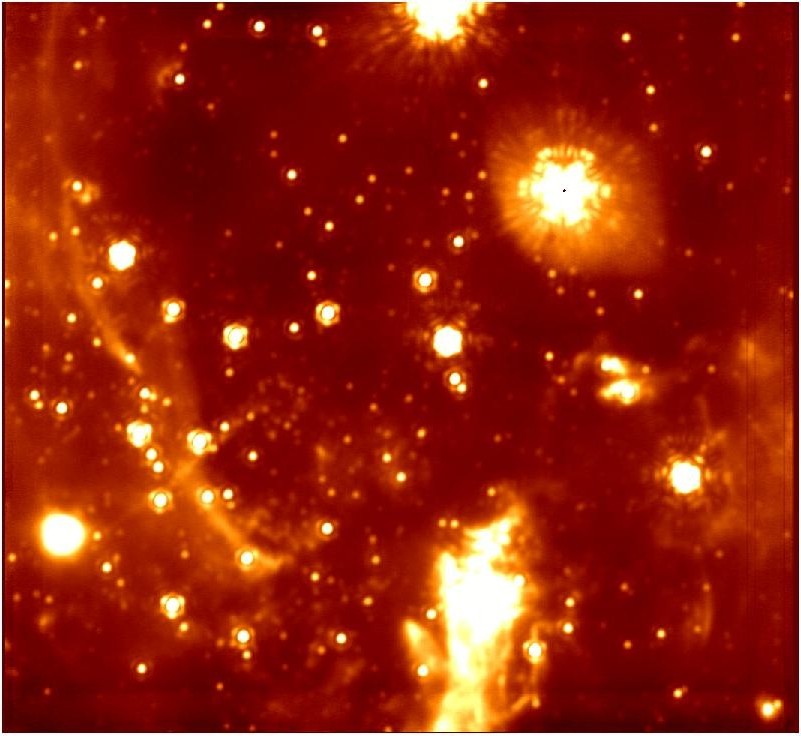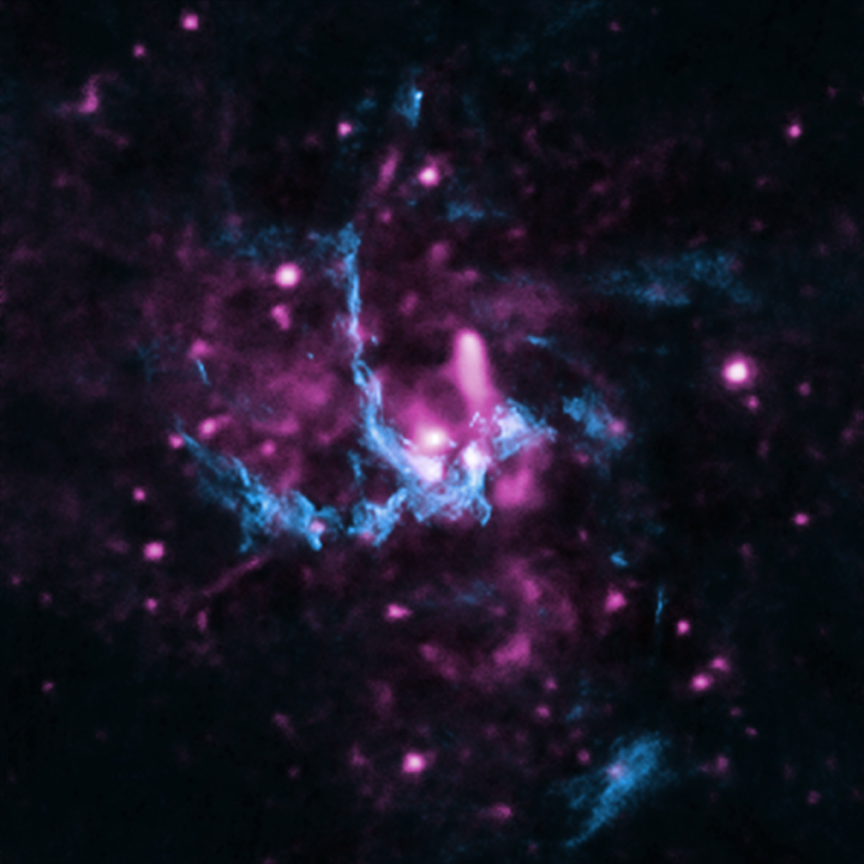Accretion
Sgr A*, the radio source associated with the central supermassive black hole, is quite underluminous as compared to black holes at the centers of other galaxies. However, with the increased sensitivity provided by adaptive optics, the infrared emission from material accreting onto Sgr A* has been detected. The emission is variable, and the luminosity of Sgr A* can increase by a factor of a few over the stellar background during a single night.
However, during an observing session on Keck 2 Telescope on May 13th, 2019, we captured Sgr A* as it suddenly became 75 times brighter before subsiding back to normal levels. The timelapse of images over 2.5 hours is shown.
The results were published in the Astrophysical Journal article.
For more information, check out the following articles: CBS News, Live Science and space.com.

Gas and dust
Understanding how massive stars might have formed recently in the immediate presence of the Galactic black hole requires knowing something about the reservoir of gas out of which they formed.
Furthermore, the hot gas surrounding the black hole and falling into it in an time-dependent accretion flow is what radiates the light that helps us pinpoint the black hole and monitor its accretion activity. Infrared and radio observations have shown that streams of gas and dust are orbiting toward and around the black hole. With the NIRC2 camera on the Keck Telescopes, we can use thermal infrared observations to see how the dust is distributed in and around the central cluster of stars, and with the OSIRIS integral field spectrograph, we can map out both the distribution and the dynamics of the gas.
This work is ongoing, as we address the complex problem of how gas can reach the central black hole and either join the accretion flow or be ejected back out as a wind. We are also using OSIRIS to study the massive "circumnuclear disk" of gas and dust that orbits further out.
For further reading:
- Paumard et al 2014 Regularized OSIRIS 3D spectroscopy at the Cirumnuclear Disk Ionization Front

Evidence of Jet in Milky Way's Black Hole
Combining the X-ray data from NASA's Chandra X-ray Observatory with the radio observations from the Very Large Array (VLA), Galactic Center Group members showed the best case yet the existence of a jet of high-energy particles blasting out of the Galactic Center Supermassive Black Hole.
The composite image shows that the jet fires away from Sgr A* and travels through space until it hits gas several light years away, triggering the formation of a shock front. The interaction also accelrates electrons and generates X-rays.
For further reading: